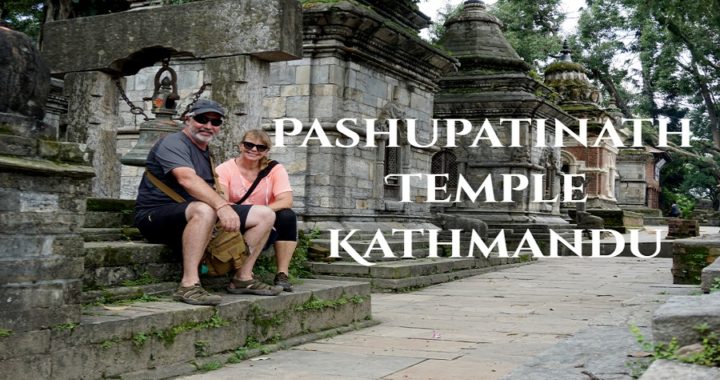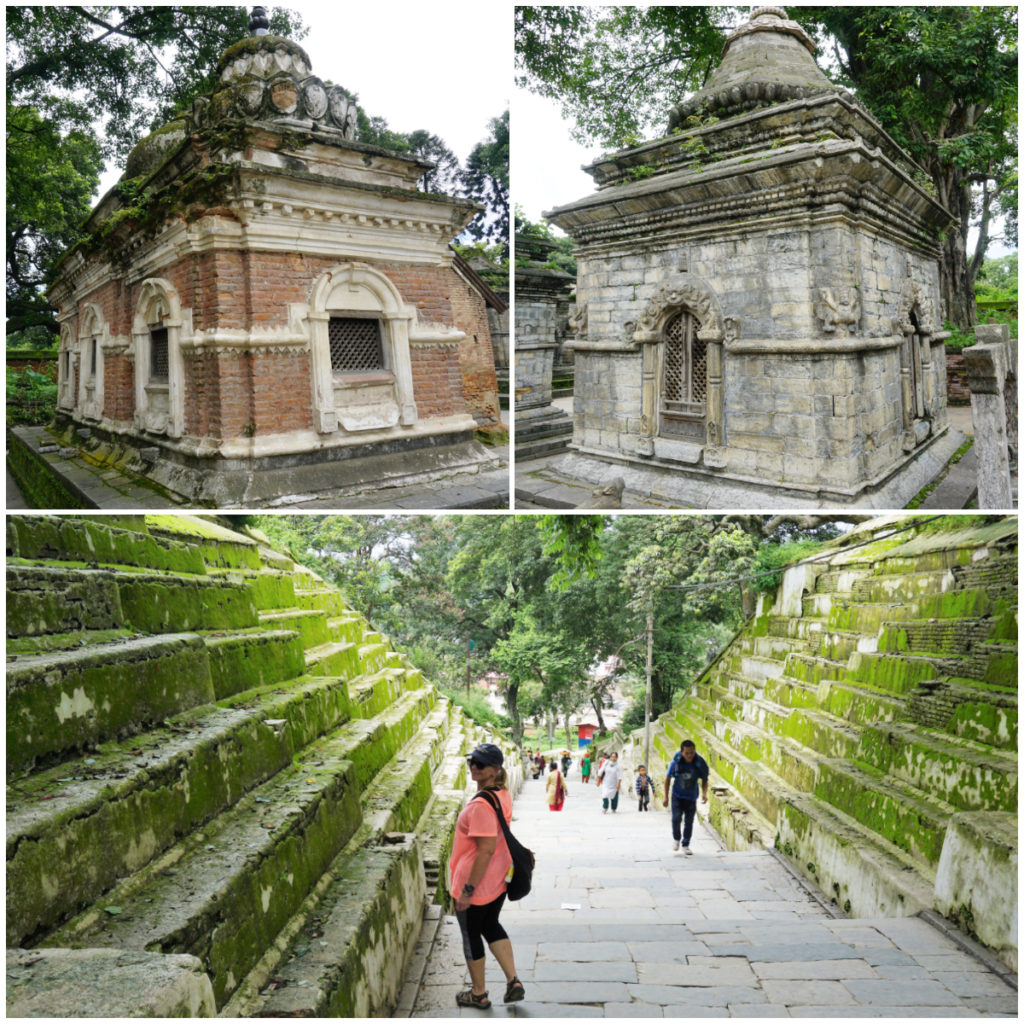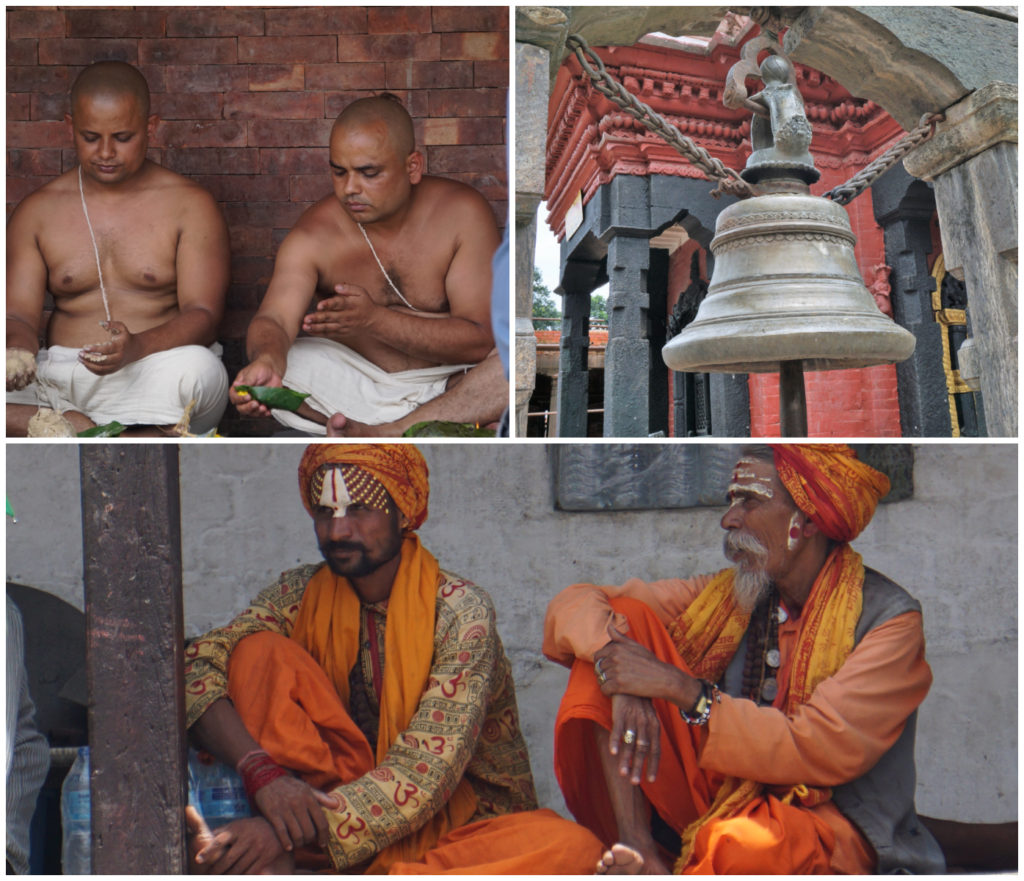Pashupatinath Temple
Built back in 1696 on the banks of the Bagmati River, Pashupatinath is Nepal’s most important Hindu temple.
Dedicated to Lord Shiva it is the largest temple complex in Nepal as it stretches both sides of the Bagmati River.
The main pagoda style temple has a gilded roof, four sides covered in silver, and wood carvings of the finest quality. Temples dedicated to several other Hindu and Buddhist deities surround the temple of Pashupatinath.
Although non-Hindu cannot enter the temple itself, there are plenty more structures to see with the vast grounds. The main pagoda style temple has four sides covered in silver and intricate wooden carvings.
There are no less than 500 shrines, spires and temples grouped together and make for an impressive sight.
Cremation Site
If you are squeamish or are not comfortable about death, then this is not for the faint-hearted. Pashupatinath is a very popular place for cremations. Cremations are part of life and death, but it is something that many people do not want to be confronted with.
Funeral pyres (platforms) line the Bagmati River. I counted 16 pyres in total and they are used on a daily basis for cremations. There are special pyres for the royal family, rich families and others for ‘normal’ people.
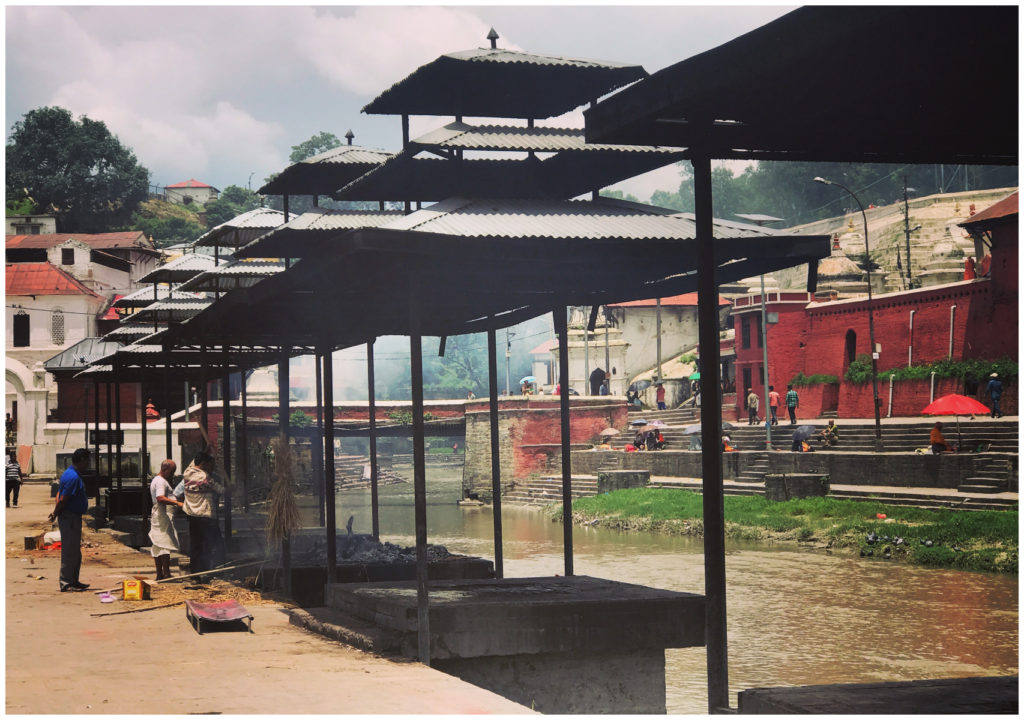
The funeral pyres are lined up along the river and the remains of an earlier Cremation. The ashes are pushed into the water once all the remains are burnt.
In the wake of the 2015 earthquake, over 4,000 cremations were conducted here in an incredibly short timeframe as Hindus believe that a body needs to be cremated within 24 hours of death. These were performed right along the edge of the river. There was a serious wood shortage and extra supplies had to be brought in to cope with the demand.
Bagmati River
According to Hindu tradition, the dead body must be dipped three times into the Bagmati River before cremation, so that the reincarnation cycle may be ended. The chief mourner (usually the first son) who lights the funeral pyre must take a holy river bath immediately after cremation. They believe that the Bagmati River purifies the spiritual sole.
As soon as the pile bursts into flames, the body is covered with wet straw. The straw is soaked with water from the river and this results in a lot of white smoke. Close relatives will wait until the body is completely burnt which can take several hours. The remaining ashes (and small body fragments) are pushed off the pyre and into the river.
It was a bit disconcerting to see small children swimming in the river and it is common practice for laundry to be done downstream from the funeral pyres. The human fat content in the water apparently is good for washing clothes. It is said this is where the idea came from to invent soap.
Witnessing a Cremation
Hindu cremations are not the same as the western world where the cremation is something private, conducted out of site. As soon as we approached the Bagmati River, we see the smoke of a cremation that is taking place. We watch, mesmerized from a distance, across the river. Feeling like we were intruding on a private moment, the local Hindus do not regard an audience as such. Most of the onlookers were at a respectful distance across the river, photo taking is not regarded as disrespectful as long as you are unobtrusive and taking a selfie would be very inappropriate.
The cremations are carried out in an almost ‘business-like’ manner. It does not hold as much importance as the spirit has already left the body to be reincarnated.
We arrived soon after the body had been washed in the river and had already been draped ready for the cremation. The men carried him over to the wood pile and proceeded to light the wood and straw. It was unfortunate that the fire lighting process was not overly successful and there was quite a bit of delay in getting a good flame started. There seemed to be quite a bit of discussion going on among the menfolk. All this time the deceased wife and mother (I’m guessing the relationship) were becoming increasingly mournful.
Thankfully another man came to the rescue (probably the chief firestarter) and got the flames going.
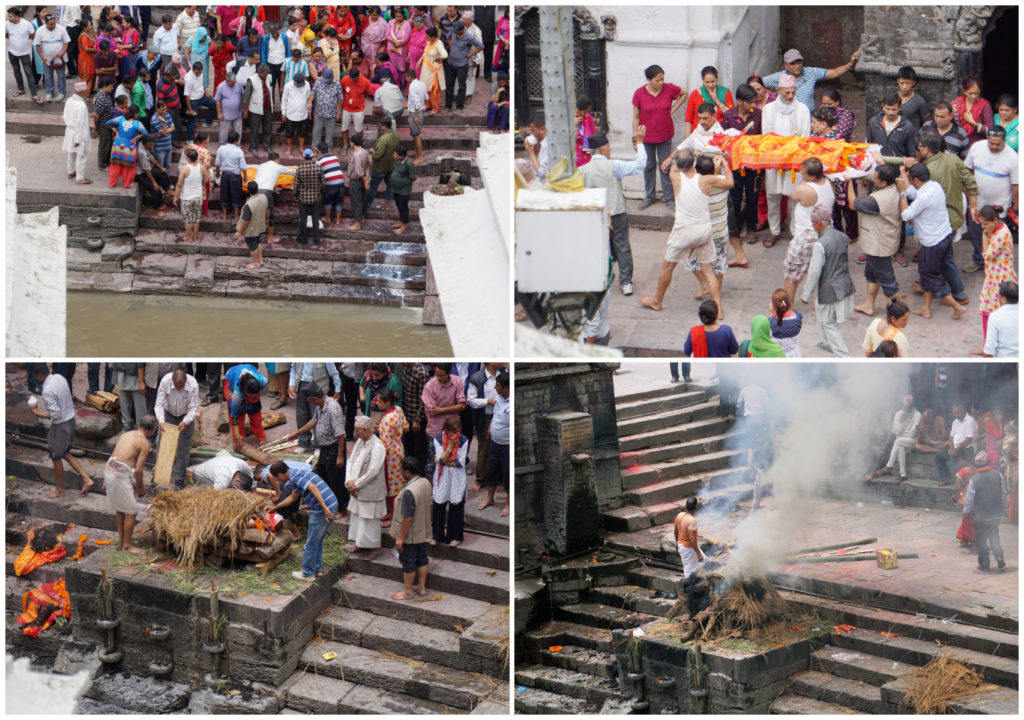
The body is washed in the river and draped (Top left), the family carry him to the pyre (top right), he is placed on top of the wood and covered with damp straw (bottom left) and head mourner lights the fire (bottom right)
Morbid Curiosity
I’m not sure if it was a morbid curiosity but we stood to watch for quite some time as the flames took hold and the wet straw was laid on top. We could initially see his face and head but these were soon covered but it was his bare feet sticking out that was the most disconcerting. They reached beyond the wood and flames and I was all the while contemplating how they were going to make sure everything was burnt. There was no other way but to unceremoniously fold the feet over into the fire!
Before we left the cremation pyres, there were another three bodies carried into what is known as ‘The Bunk Room’. This is where they are brought to be prepared. One was still attached to an oxygen bottle. Obviously trying to be kept alive until their arrival at this sacred site. They believe that if they die and are cremated here, then they will be reincarnated into a human form and all bad karma will be forgiven.
Our visit to Pashupatinath gave us a better understanding of how Hindus treat life and death. They have a different perspective on the cycle of life and have held firm in their beliefs for centuries.
Click on the link below to see the highlights of our visit to Pashupatinath. Please be aware that there are scenes involving a deceased person and a cremation.
